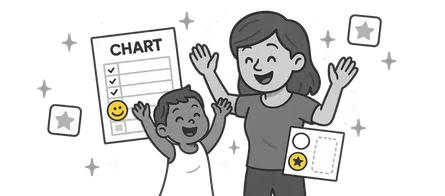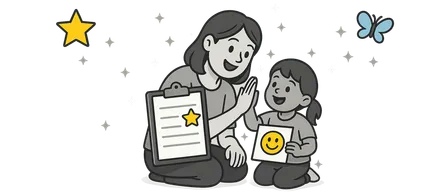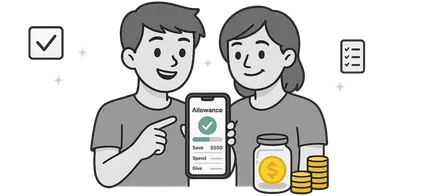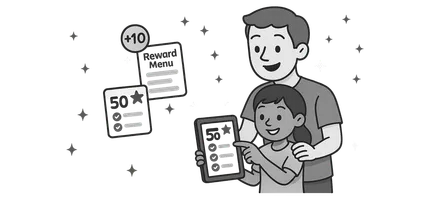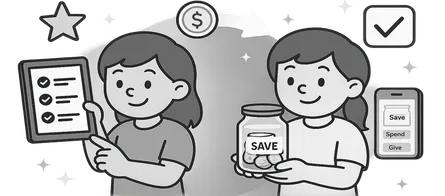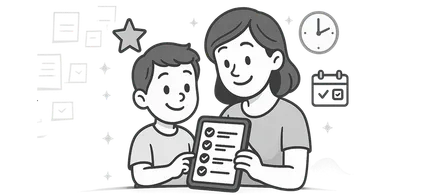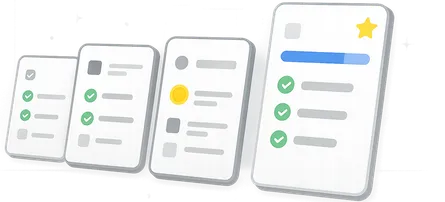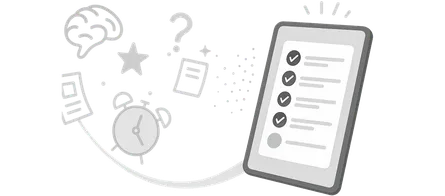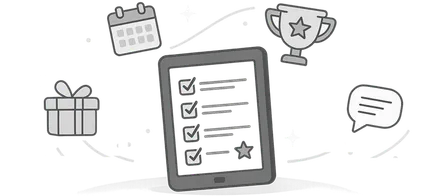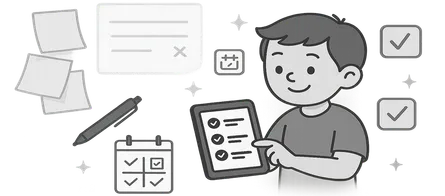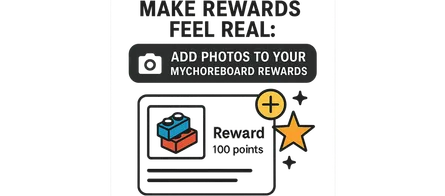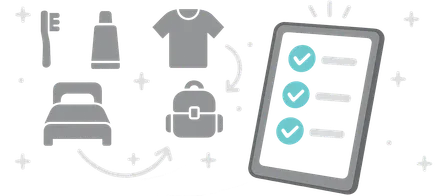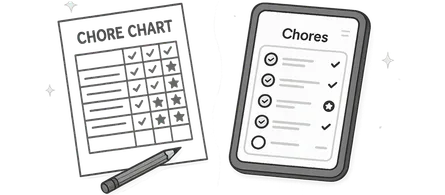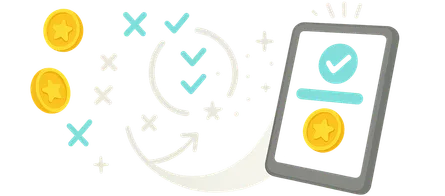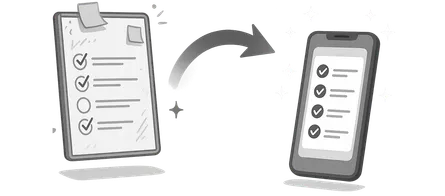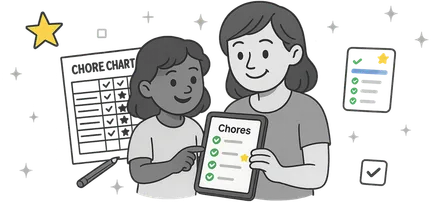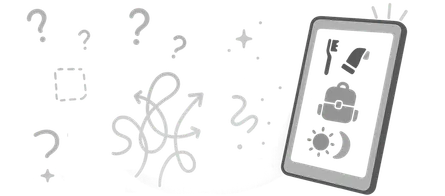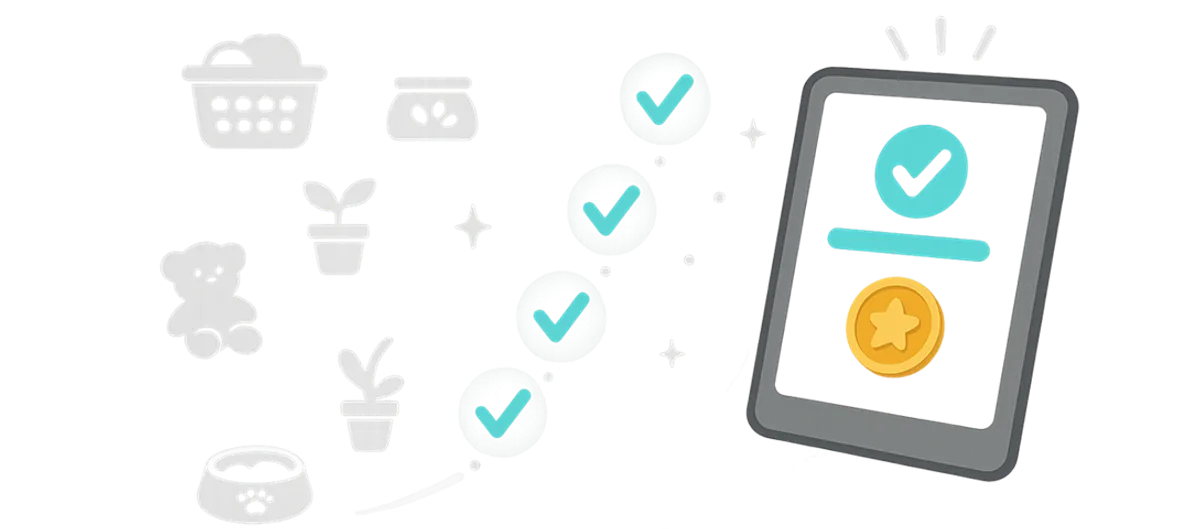
ADHD and Household Responsibilities: What Parents Should Know
- Jacob Volk
- Parenting , ADHD
- 26 Sep, 2025
Why Chores Matter for ADHD Kids
If asking your ADHD child to “clean your room” ends in frustration, you’re not alone. Household chores can feel like an uphill battle—but they’re also one of the best ways to build real-world life skills.
Chores aren’t just about keeping a clean house. They teach executive function — the ability to plan, start, and finish tasks — and they strengthen working memory, accountability, and persistence.
Research has found that children who participate regularly in household chores show stronger working memory and inhibition — key executive skills often impacted by ADHD (ResearchGate, 2022).
But another study found that kids with ADHD are less likely to participate in chores compared to their peers (SAGE Journals, 2020). The reason isn’t laziness — it’s that multi-step, unstructured tasks feel overwhelming without visual guidance or clear sequencing.
That’s where digital chore apps come in. They break responsibilities into visual, manageable actions and pair each step with consistent feedback and encouragement.
New here? This article is part of our ADHD & Routines series. For a full overview of apps and structure systems, start with our Chore App for ADHD Kids Guide .
Common Challenges with ADHD and Chores
Understanding why chores feel difficult helps you design systems that support — not punish — ADHD brains.
ADHD affects how kids process information and how they perceive time. That’s why typical household expectations — “clean up your room” or “help with dishes” — often fall apart.
Here’s what most families encounter and how to adjust:
| Challenge | Why It Happens | What Helps |
|---|---|---|
| “I forgot.” | Working memory gaps mean steps vanish mid-task. | Use a digital chart or app that shows each step visually. |
| “I’ll do it later.” | Time blindness makes “later” feel the same as “never.” | Schedule chores at consistent times with reminders. |
| Meltdowns when starting. | Task initiation is hard when the task feels too big or boring. | Break chores into small, visual, 2–3 minute actions. |
| Constant reminders (nagging). | Verbal prompts lose meaning after repetition. | Let the chart or app handle cues; you focus on praise. |
When you understand the “why,” you can swap pressure for structure—and watch consistency grow.
How to Assign Household Responsibilities That Work
The goal isn’t to load kids with chores; it’s to build confidence and rhythm. ADHD kids thrive when tasks are short, predictable, and visible.
1️⃣ Start Small (Mastery Before Volume)
The first rule of ADHD-friendly chores: start with success. Give your child one or two small, winnable tasks and let mastery come before expansion.
Example: feeding the pet, putting clothes in the hamper, or wiping the table after dinner.
Each success triggers dopamine and builds the belief: I can do this. Once those are automatic, add one new task at a time.
Think of chores like weights at the gym—start light, then add resistance as strength builds.
2️⃣ Use a Visual Checklist for Every Step
ADHD kids need clarity, not vagueness. “Clean your room” is an abstract concept; “Pick up toys → Make bed → Put clothes in hamper” is a sequence.
Visual checklists or digital chore apps break down that abstract order into clear, visible steps. When the next step is always on-screen, there’s no need to hold it all in working memory.
(Also see: Why Visual Cues Help ADHD Kids Stick to Routines)
Clarity creates calm. When the list tells the story, kids can focus on doing—not decoding.
3️⃣ Pair Responsibility with Reward
ADHD motivation depends on immediate reinforcement. Without it, effort and outcome feel disconnected. That doesn’t mean bribery—it’s simply how the ADHD brain learns consistency.
Create a system that links action to visible feedback:
- Each completed task earns a star or coin.
- 10 stars = choosing dinner, screen time, or a fun activity.
- Add verbal praise: “You stuck with it even when you got distracted—that’s focus!”
Chore apps like MyChoreBoard make this process automatic, so parents don’t have to track points manually.
(Related: Reward Systems That Motivate ADHD Kids)
ADHD kids aren’t driven by what’s “right”—they’re driven by what feels rewarding. Make effort feel worth it.
4️⃣ Keep Timing Consistent
Routine equals safety for ADHD minds. Assign chores to predictable time anchors like “after breakfast” or “before screen time.”
When expectations are consistent, kids spend less energy remembering and more energy doing. Over time, the timing itself becomes the cue—the chart just reinforces it.
Predictability reduces resistance. A task that always happens at the same time stops feeling like a surprise.
5️⃣ Make It Collaborative
Ownership fuels accountability. Let your child choose between tasks or customize their icons in the app.
You might say: “You can either feed the dog or set the table this week—your choice.”
When kids have a say, they engage more deeply and resist less. Shared decision-making also builds emotional safety; they’re not being “told what to do,” they’re contributing to the plan.
Collaboration builds buy-in. Control kills it.
Real-World Example
Before using a structured system, one parent described evenings as “the nightly meltdown hour.” Their ADHD child resisted every reminder, and the family ended each day in frustration.
After setting up a digital chore list with visual steps, things changed. The child started with two daily tasks: feed the pet and clear their dishes. Each task had icons, sound effects, and a visible progress bar.
After one week, the child started completing tasks without prompts. By week three, they were asking to add a new one—watering plants.
The change wasn’t discipline—it was design. Once success became visible, pride took over.
Long-Term Benefits
Over time, household responsibilities create deeper growth than most parents realize. When routines become predictable and rewarding, ADHD kids start internalizing life skills that reach far beyond chores.
Here’s what grows quietly in the background:
- Time awareness: Learning what “five minutes” or “before dinner” really means.
- Task sequencing: Practicing how to start, continue, and complete.
- Accountability: Seeing that every contribution matters to the household.
- Confidence: Building self-trust through repeated success.
- Independence: Moving from external reminders to internal motivation.
The real win isn’t a clean house—it’s a confident kid who feels capable of managing their world.
For Parents: What Progress Looks Like
Progress with ADHD chores isn’t linear. Expect setbacks, slumps, and bursts of motivation. The key is keeping the structure stable even when energy fluctuates.
You’ll know it’s working when:
- You repeat yourself less.
- Tasks happen faster, with fewer reminders.
- Your child starts suggesting their own responsibilities.
- Frustration at chore time turns into neutral or even positive conversation.
Consistency—not perfection—is the measure of success.
Sustainable structure beats short-lived motivation every time.
Frequently Asked Questions
ADHD impacts executive function, making it harder to plan, prioritize, and follow through. Multi-step chores feel overwhelming without visual structure and timely feedback.
Start with one or two small tasks they can complete daily. Use a visual checklist and pair it with instant positive feedback. Success builds confidence, which leads to responsibility.
Yes. Research shows that engaging in chores improves working memory, self-regulation, and persistence—key skills for independence and long-term success.
Start with simple, fast, visible tasks—feeding pets, wiping tables, sorting laundry. Avoid vague chores like “clean your room” until structure is well established.
Use a shared digital app like MyChoreBoard. Both parents see updates in real time, so expectations stay consistent across households and kids don’t feel confused or caught between systems.
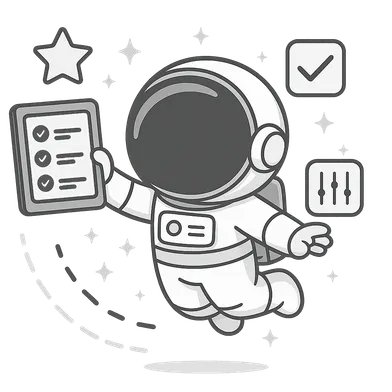
Ready to try MyChoreBoard with your kids?
Install on any phone, tablet or computer. Free with no sign-in hoops.
Get Started Now